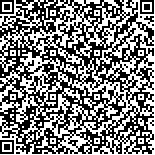| 引用本文: |
陆展辉,李艳玲,孙婧怡,杨芙蓉,丁煌,邓常清,刘晓丹.黄芪甲苷配伍三七总皂苷对OGD/R大鼠脑微血管内皮细胞屏障功能的影响[J].湖南中医药大学学报,2023,43(10):1786-1792[点击复制] |
|
| |
|
|
| 本文已被:浏览 1962次 下载 1055次 |
| 黄芪甲苷配伍三七总皂苷对OGD/R大鼠脑微血管内皮细胞屏障功能的影响 |
| 陆展辉,李艳玲,孙婧怡,杨芙蓉,丁煌,邓常清,刘晓丹 |
| (湖南中医药大学中西医结合学院, 中西医结合心脑疾病防治湖南省重点实验室, 湖南 长沙 410208) |
| 摘要: |
| 目的 观察黄芪甲苷(astragaloside Ⅳ, AST Ⅳ)配伍三七总皂苷(Panax notoginseng saponins, PNS)对氧糖剥夺后再复糖复氧(oxygen-glucose deprivation/reperfusion, OGD/R)大鼠脑微血管内皮细胞(brain microvascular endothelial cells, rBMECs)屏障功能的影响。方法 原代培养并鉴定rBEMCs,取第3代rBMECs,采用AST Ⅳ与PNS高(100 μmol/L+60 μmol/L)、中(50 μmol/L+30 μmol/L)、低(25 μmol/L+15 μmol/L)剂量配伍预处理24 h,以OGD/R建立缺血再灌注损伤模型,同时设立对照组和模型组。CCK-8检测细胞存活情况,利用跨内皮细胞电阻(transendothelial electrical resistance, TEER)检测细胞屏障功能的改变,免疫荧光检测血脑屏障连接蛋白Occludin和ZO-1蛋白含量,Western blot检测黏附分子ICAM-1、VCAM-1的蛋白表达及NF-κB-p65的活化表达情况,ELISA检测细胞培养液中炎症因子TNF-α及IL-1β表达水平。结果 成功培养分离rBMECs,阳性表达vWF。与对照组比较,模型组细胞存活数量明显减少(P<0.01),与模型组比较,AST Ⅳ与PNS不同剂量配伍均能提高rBMECs的存活率(P<0.05,P<0.01)。与对照组比较,模型组TEER值、Occludin和ZO-1荧光强度显著降低(P<0.01),与模型组比较,AST Ⅳ与PNS不同剂量配伍均能显著增高TEER值(P<0.01)、增加Occludin和ZO-1荧光强度(P<0.05,P<0.01)。与对照组比较,模型组TNF-α、IL-1β、ICAM-1、VCAM-1、p-NF-κB-p65表达显著增强(P<0.01),与模型组比较,AST Ⅳ与PNS中高剂量配伍组TNF-α、IL-1β、ICAM-1、VCAM-1、p-NF-κB-p65表达量下降(P<0.01)。结论 AST Ⅳ配伍PNS能够显著抑制NF-κB活化,降低细胞炎症因子的表达,增高OGD/R模型rBMECs屏障功能,保护缺血缺氧后的脑组织。 |
| 关键词: 大鼠脑微血管内皮细胞 脑缺血再灌注 黄芪甲苷 三七总皂苷 屏障功能 |
| DOI:10.3969/j.issn.1674-070X.2023.10.006 |
| 投稿时间:2023-06-21 |
| 基金项目:国家自然科学基金项目(81904181);湖南省自然科学基金项目(2022JJ30439);湖南省卫生健康委员会科研项目(2022202203075430);湖南省大学生创新创业训练计划项目(S202010541017);湖南中医药大学中西医结合一流学科开放基金项目(2020ZXYJH70);湖南中医药大学2022年大学生创新创业训练项目(编号152)。 |
|
| Effects of astragaloside Ⅳ combined with Panax notoginseng saponins on the barrier function of OGD/R rBMECs |
| LU Zhanhui,LI Yanling,SUN Jingyi,YANG Furong,DING Huang,DENG Changqing,LIU Xiaodan |
| (Key Laboratory of Hunan Province for Integrated Chinese and Western Medicine on Prevention and Treatment of Cardio-cerebral Diseases, School of Integrated Chinese and Western Medicine, Hunan University of Chinese Medicine, Changsha, Hunan 410208, China) |
| Abstract: |
| Objective To observe the effects of astragaloside Ⅳ (AST Ⅳ) combined with Panax notoginseng saponins (PNS) on the barrier function of rat brain microvascular endothelial cells (rBMECs) by oxygen-glucose deprivation/reperfusion (OGD/R). Methods The primary rBEMCs were cultured and identified, and the third-generation rBMECs were selected. AST Ⅳ was combined with PNS at high (100 μmol/L+60 μmol/L), medium (50 μmol/L+30 μmol/L), and low-(25 μmol/L+15 μmol/L) doses to pretreat rats for 24 hours, and an ischemia-reperfusion injury model was established using OGD/R. Meanwhile, control group and model group were established. Cells' survival status was checked by CCK-8, the changes of cell barrier function were measured by transendothelial electrical resistance (TEER), the content of blood-brain barrier junction protein Occludin and ZO-1 protein was determined by immunofluorescence, the protein expressions of adhesion molecules ICAM-1 and VCAM-1, and NF-κB-p65 activation expression were examined by Western blot, and the expression levels of inflammatory cytokines TNF-α and IL-1β in cell culture fluid were determined by ELISA. Results rBMECs, with the positive expression of vWF factor, were successfully cultured and isolated. Compared with control group, the number of survived cells in model group significantly reduced (P<0.01). Compared with model group, the combination of AST Ⅳ and PNS at different doses could improve the survival rate of rBMECs (P<0.05, P<0.01). Compared with control group, the TEER value, as well as the fluorescence intensity of Occludin and ZO-1 significantly decreased in model group (P<0.01). Compared with model group, the combination of AST Ⅳ and PNS at different doses significantly increased the TEER value (P<0.01), and also increased the fluorescence intensity of Occludin and ZO-1 (P<0.05, P<0.01); compared with control group, the expressions of TNF-α, IL-1β, ICAM-1, VCAM-1, and p-NF-κB-p65 in model group significantly increased (P<0.01), while compared with model group, the expression levels of TNF-α, IL-1β, ICAM-1, VCAM-1, and p-NF-κB p65 in the medium- and high-dose combination groups of AST Ⅳ and PNS decreased (P<0.01). Conclusion AST Ⅳ combined with PNS can significantly inhibit NF-κB activation, suppress the expression of inflammatory cytokines, improve the barrier function of rBMECs in OGD/R model, and protect the brain tissue after ischemia and hypoxia. |
| Key words: rat brain microvascular endothelial cells cerebral ischemia-reperfusion astragaloside Ⅳ panax notoginseng saponins barrier function |
|

二维码(扫一下试试看!) |
|
|
|
|




